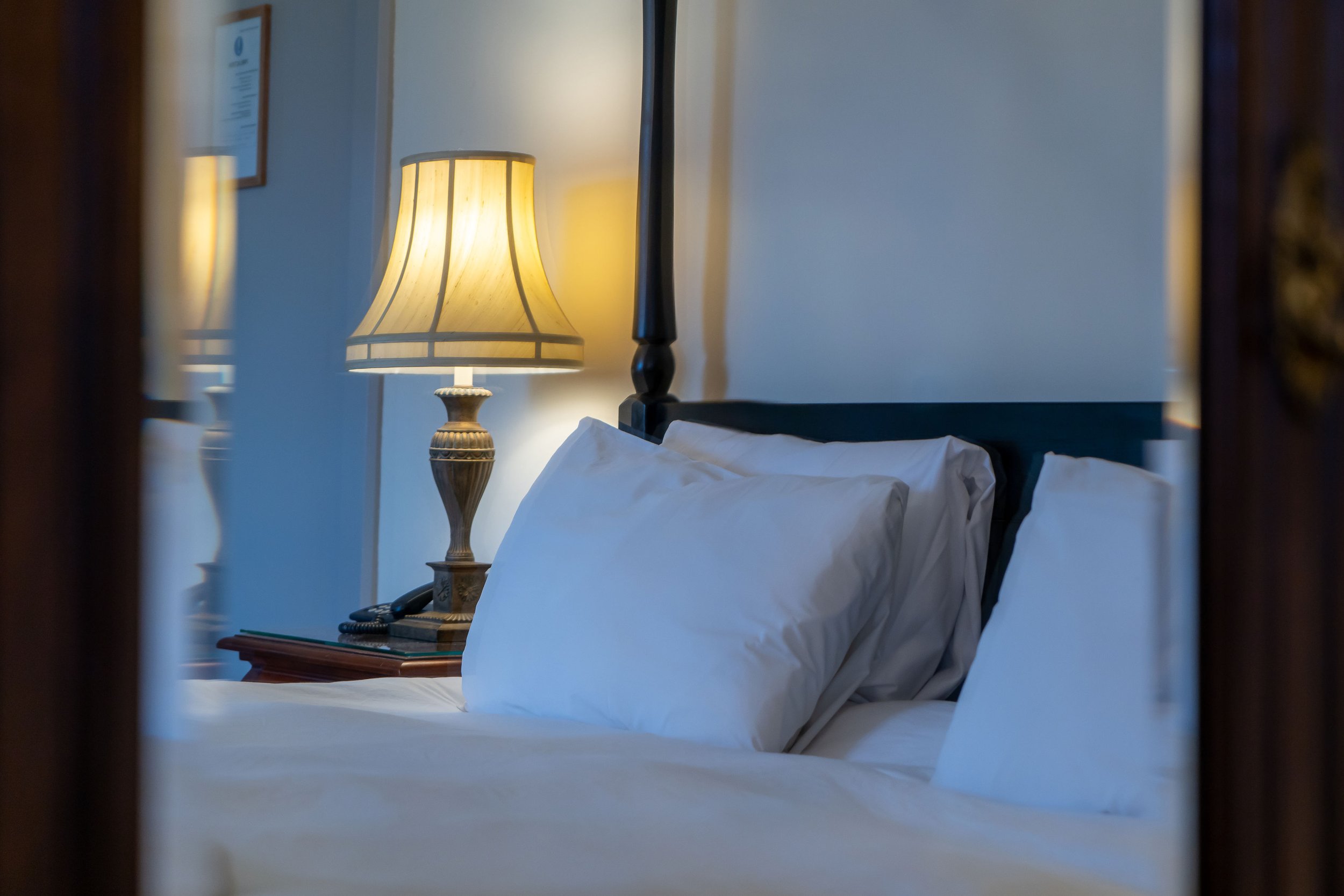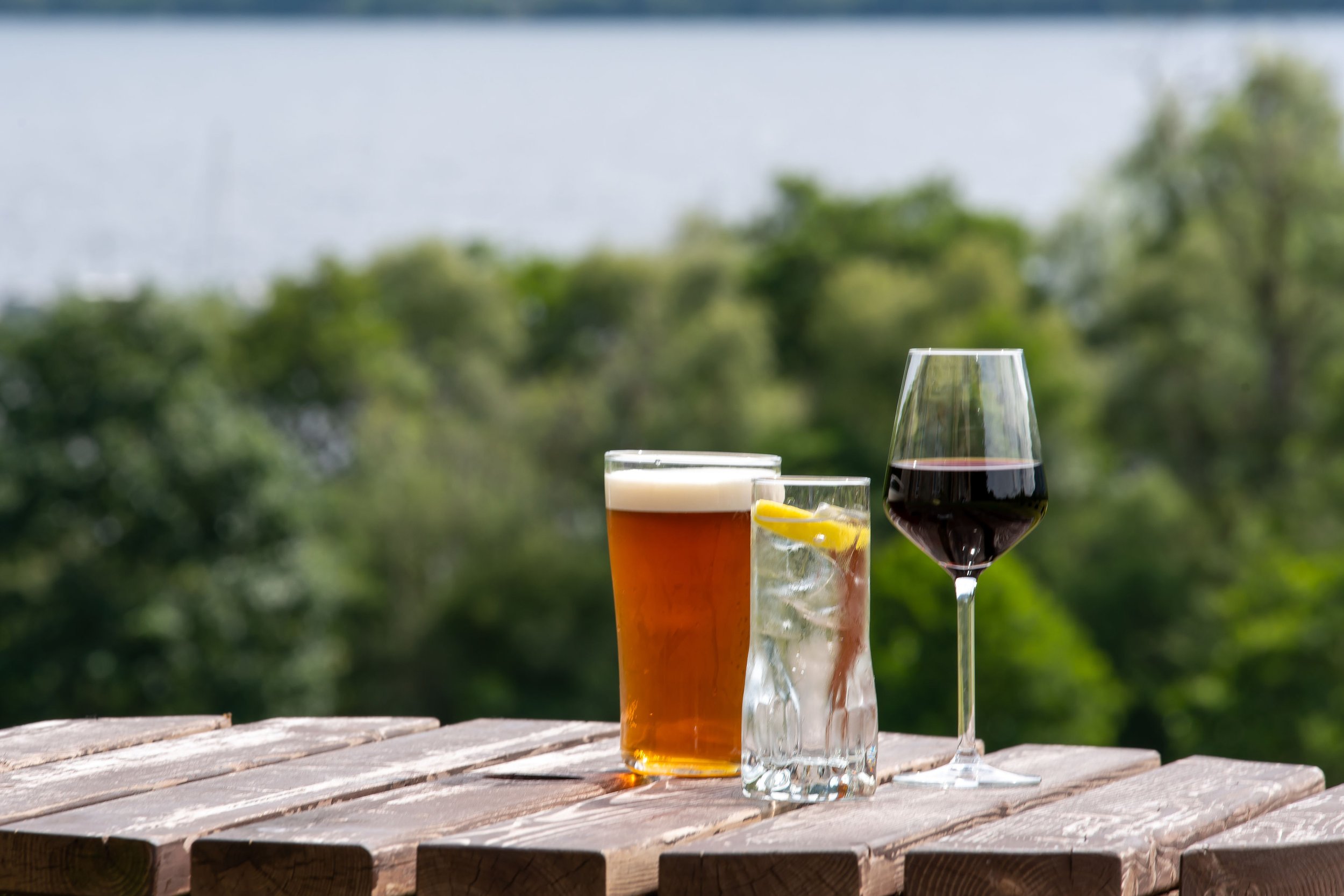
Home > About
About
The History of The Inch Hotel at Fort Augustus
The Inch or Inchnacardoch House has been here for over 150 years, formerly a hunting lodge, and then a base for the RAF during World War 2, finding its current vocation in the 1950s. The Inch still retains all the charm and features from its fascinating past with the bell used to call the hunters home at night still in working order on the side of the building and period features throughout the hotel. At the side of the hotel is a woodland path leading through the woods to the abandoned hanging shed used for the game collected on hunts - a great reminder that this was, and remains a working house.
Hotel on Loch Ness is Steeped in History
The name Inchnacardoch comes from Gaelic and means field or meadow of the blacksmith in reference to the former blacksmiths house just in front of the hotel. This meadow is now the summer home to five highland cattle seen on many of the images on this website and have become a favourite with tourists passing through.
The Inchnacardoch House was built by Lord Lovat, the Lovat family have been at the heart of Scotland for centuries and have a family history very long, very remarkable and very complicated. Read about it here »
In front of the hotel in Inchnacardoch bay is Cherry Island - all that remains of an ancient crannog. These man made islands stretch back over 5000 years and were former loch dwellings for our prehistoric ancestors.
History of the Surrounding Area
Cherry Island at Fort Augustus
Leaving Fort Augustus travelling north on the A82 after about a mile (1.6km) you will reach Inchnacardoch Bay. It is in this bay that the only island on Loch Ness is situated. Cherry Island, or to give it its correct name “Eileen Mhuireach”, means island of Murdoch. Although all that can be seen today is a rocky tree clad island, it is in fact man made and is known as a crannog, which originally covered an area of 160ft by 180ft (48mts by 54 mts). Crannogs date back to prehistoric times and were built to protect people from wild animals, such as bears and wolfs, but it also gave protection from other clans when they came raiding. Large beams of oak were laid on silt constructed Crannogs and oak posts were driven vertically down the outside edge of the beams. Boulders and rocks were placed on top of the oak beams until the island was above water level. Then soil and turf were added; it was after this that the buildings were put into place. These would consist of pens for the livestock. Then a large defensive wooden fence would have totally encircled the crannog. Some crannogs had a shallow causeway to the land, where others had a boat to ferry them to and fro. In their time the crannogs would have been a formidable stronghold.
If you get time during your visit you can set sail aboard the Royal Scot whose Loch tour gives more information and an opportunity to see the hotel from the centre of the loch.
Local Area Information Surrounding Fort Augustus and Loch Ness
Below is some more general information about the history of the local area.
Fort Augustus is in the Scottish Highlands, at the south west end of Loch Ness. The village has a population of around 646 (2001). Until the early 18th century the settlement was called Kiliwhimin, and the Gaelic name for the modern village is still Cill Chuimein. It was renamed 'Fort Augustus' after the unsuccessful Jacobite Rising of 1715. The accepted etymology is that the settlement was originally named after Saint Cummein of Iona who built a church there. Other suggestions are that it was originally called Ku Chuimein after one of two abbots of Iona of the Comyn clan, whose badge Lus mhic Chuimein refers to the cumin plant, or that it was called Cill a' Chuimein ("Comyn's Burialplace") after the last Comyn in Lochaber.
In the aftermath of the Jacobite uprising in 1715, General Wade built a fort (taking from 1729 until 1742) which was named after the Duke of Cumberland. The settlement grew, and eventually took the name of this fort. The fort was captured by the Jacobites in April 1745, just prior to the Battle of Culloden.
The actual fort was sold to the Lovat family in 1867 and in 1876 they passed the site and land onto the Benedictine order. The monks set up Fort Augustus Abbey from the fort and later constructed a school there, but abandoned the site in 1998. For several years after that it was owned by Terry Nutkins.
He also owned the Lovat Hotel that stands on the site of the old Kilwhimen Barracks, one of four built in 1718. This houses the west curtain wall of the old Fort, intact with gun embrasures. The Lovat was originally built as the local Station Hotel.
In 1857 the fort was sold for £5,000 to Lord Lovat, whose son Simon, the thirteenth Lord Lovat, offered it and the land surrounding in 1876 to the Benedictine Fathers. In September of the same year, the foundation stone of a college, monastery and hospice was laid and the monastery was inaugurated in 1878. The abbey, with its monastic school and guesthouse buildings, stands in 15 acres of grounds and a further 8 to 10 acres are used for playing fields or growing vegetables. Twenty-five priests and 15 lay brothers were housed within the abbey, and, during term, 155 boys. A new school wing, built through the generosity of Sir James Calder, a former pupil of the school, came into use in 1960. From 1903 to 1933 a railway line carried passengers between Fort Augustus and the West Highland line at Spean Bridge and continued to carry goods until after the last war. The dismantled viaduct and other bridges, and the line of the route with its embankments and cuttings, are sad reminders of the time when one could travel by train to this beautiful village.


